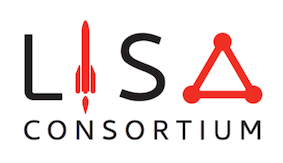Speaker
Description
In this talk, we will explore some of the challenges and possibilities of detecting stochastic gravitational wave backgrounds (SGWBs) with LISA. The main scientific observables produced by LISA will be three semi-independent TDI data streams, one of which is a so-called null channel, which has reduced sensitivity to gravitational waves (GW). LISA will certainly have the ability to directly constrain the level of a possible SGWB present in the data via the observed noise level in the sensitive channels, but actually distinguishing it from instrumental effects will require some method to characterize the latter.
I will present the results of a study on the ability to directly constrain the level of instrumental noise in a sensitive channel through the level observed in the null channel. We consider two limiting noise sources, test-mass acceleration noise and interferometric phase measurement noise, and discuss how these noises appear differently in the considered TDI channels, which limits the ability of the null channel to quantify the instrumental noise in the sensitive channel. However, we demonstrate that in-flight noise estimations from the null channel can still be used to claim the detection of a strong SGWB in this scenario. While less stringent than other results that have appeared in the literature, our method has the advantage of being quite general, making few assumptions on the noise or signal shapes and properties.

